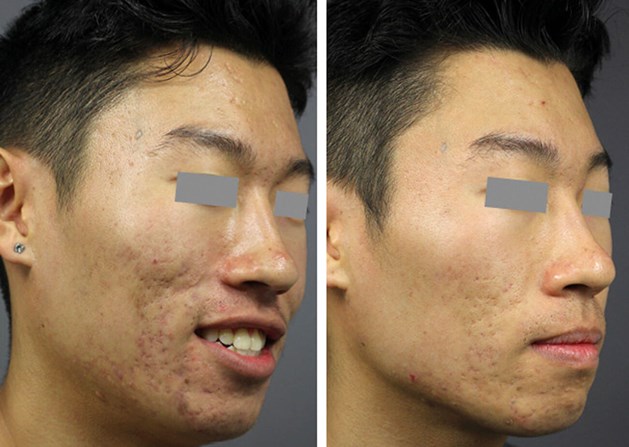Just How to Treat Acne Scars: Proven Methods for a Perfect Complexion
Just How to Treat Acne Scars: Proven Methods for a Perfect Complexion
Blog Article
Understanding the Various Skin Problem and Reliable Treatment Options for Acne Scars
Acne scars represent an intricate interaction of skin problems that considerably impact people' self-confidence and general skin health and wellness. Comprehending the unique types of acne scars-- hypertrophic and atrophic-- alongside their underlying causes, is essential for determining efficient treatment techniques. Various healing alternatives exist, ranging from sophisticated skin-related treatments to natural remedies. The efficacy of these therapies frequently hinges on personalized analyses by certified specialists. As we explore the landscape of acne scar monitoring, it becomes evident that the trip towards clearer skin may involve even more than just topical services.
Kinds Of Acne Scars

In comparison, hypertrophic marks result from an overflow of collagen during the healing procedure, bring about elevated locations on the skin. These scars are often solid and can vary in shade, occasionally showing up red or darker than the surrounding skin.
Understanding these sorts of acne marks is crucial for creating a reliable therapy plan - acne and acne scars treatment. Alternatives may include chemical peels, laser treatment, microneedling, or facial fillers, tailored to the particular mark kind. A detailed examination with a skin specialist can aid establish the most proper intervention, taking into consideration the person's skin kind, mark seriousness, and overall skin wellness
Reasons of Acne Scarring
Scarring takes place as an outcome of the body's all-natural recovery feedback to swelling and injury caused by acne lesions. When acne forms, it causes an inflammatory response, resulting in the release of various cytokines and development factors that promote healing. This procedure can sometimes lead to too much cells formation or inadequate repair work, resulting in scars.
The main sources of acne scarring consist of the extent of the acne itself, period of the lesions, and private skin types. Severe inflammatory acne, such as cysts and nodules, is most likely to lead to scarring because of deeper tissue damage. In addition, incorrect handling of acne lesions, such as pressing or choosing, can intensify tissue injury and inflammation, raising the probability of scarring.
Genetic proneness additionally plays a significant duty; individuals with a family history of scarring are at a higher danger. Moreover, skin type and color can affect scar formation, as darker complexion might experience post-inflammatory hyperpigmentation, while lighter skin may create atrophic scars.
Eventually, comprehending these causes is important in managing acne and alleviating the capacity for scarring.

Treatment Alternatives for Scarring
Efficient treatment options for acne scarring differ relying on the kind and seriousness of the scars. Usually classified right into atrophic, hypertrophic, and keloid marks, these conditions require customized methods for optimal outcomes.
For atrophic scars, which are characterized by a loss of cells, treatments such as chemical peels, microdermabrasion, and laser treatment are frequently utilized. These techniques promote skin renewal and promote collagen production, therefore enhancing skin structure. Subcision, a minimally invasive treatment, can also be reliable by breaking up coarse bands below the skin.
Hypertrophic and keloid marks can be much more testing to treat. Alternatives include corticosteroid injections to reduce swelling and squash the marks. In some situations, cryotherapy or laser treatment may be recommended to minimize their look.
Surgical alternatives are offered for extreme scarring, where excision or skin grafting may be needed. It's vital for people to talk to a dermatologist to examine their specific mark kind and review the most ideal treatment plan. Incorporating multiple therapies typically yields the finest end results, guaranteeing that each individual's one-of-a-kind skin disease is resolved effectively.
Natural Remedy and All-natural Solutions
All-natural solutions and natural home remedy can give an available technique for people looking for to boost the appearance of acne marks (acne and acne scars treatment). Numerous active ingredients located in the home kitchen area have actually shown potential benefits in enhancing skin texture and promoting healing

An additional efficient alternative is lemon juice, which acts as a natural exfoliant and can lighten hyperpigmentation. It should be made use of very carefully, as it might trigger photosensitivity. Oatmeal masks are also beneficial; their mild peeling can assist get rid of dead skin cells while calming irritability.
Important oils, such as tea tree oil and lavender oil, can even more support mark healing due to their antimicrobial buildings. It is crucial to perform a spot test before browse around this web-site using any type of remedy to make sure there are no adverse responses. These natural options can be a corresponding strategy in the journey to reduce acne marks.
Avoiding Future Scarring
Embracing a positive technique to skin care can dramatically minimize the risk of developing future acne scars. Regular cleansing, peeling, and hydration can assist maintain skin health and wellness and stop stopped up pores.
In addition, staying clear of the lure to squeeze or choose acne lesions is important, as this can result in swelling and subsequent scarring. Instead, people need to concentrate on using topical therapies that promote healing and lower inflammation. Components such as salicylic acid, benzoyl peroxide, and retinoids are recognized for their efficiency in managing acne and reducing marks.
Sunlight defense is one more important component; exposure to UV rays can dim marks and hinder healing. Utilizing a broad-spectrum sunscreen daily can alleviate these effects.
Lastly, keeping a healthy diet rich in anti-oxidants and staying moisturized assistances skin regeneration. By carrying out these safety nets, people can dramatically reduce their risk of future scarring and advertise overall skin health.
Verdict
In verdict, a comprehensive understanding of acne scars, encompassing both atrophic and hypertrophic types, is crucial for effective treatment methods. Examination with a dermatologist stays imperative to devise customized approaches that consider individual skin types and scar intensity, eventually improving the effectiveness of mark administration methods.
Acne scars represent a complicated interaction that site of skin problems that significantly impact individuals' self-confidence and general skin health and wellness. The two main groups of acne marks are hypertrophic and atrophic marks. These marks are additional categorized into three subtypes: ice pick marks, which are slim and deep; boxcar scars, which are wider and have well-defined edges; and rolling marks, which develop a wave-like look due to uneven skin texture.
A complete examination with a skin doctor can help establish the most appropriate treatment, taking into account the individual's skin type, mark extent, and overall skin health.
Consultation with a skin specialist stays important to devise customized methods that consider specific skin types and mark extent, Web Site inevitably improving the efficiency of mark monitoring strategies.
Report this page